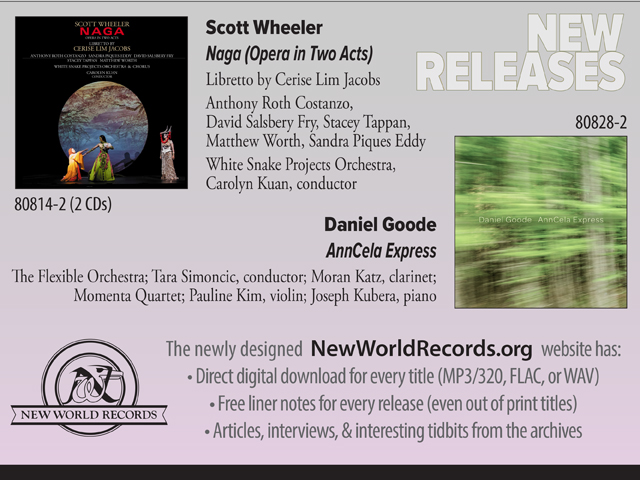Moment's Notice
Reviews of Recent Media
(continued)
Alexander Hawkins
Togetherness Music For Sixteen Musicians Feat. Evan Parker + Riot Ensemble
Intakt CD361
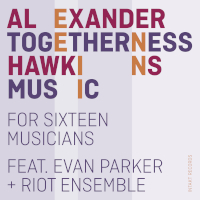 On Togetherness Music British pianist Alexander Hawkins brings together not only an intriguing cast list, but several strands from his work over the last decade. As the subtitle promises, iconoclastic saxophonist Evan Parker figures prominently. Since they first shared the bandstand some ten years hence, he and Hawkins have appeared together increasingly frequently, documented on Filu e’ Ferru (Punta Giara, 2015) and the duet Leaps In Leicester (Clean Feed, 2016), though the pandemic has hindered the mooted recording of the quartet with Paul Lytton and John Edwards which has regularly graced the stage of London’s Vortex.
On Togetherness Music British pianist Alexander Hawkins brings together not only an intriguing cast list, but several strands from his work over the last decade. As the subtitle promises, iconoclastic saxophonist Evan Parker figures prominently. Since they first shared the bandstand some ten years hence, he and Hawkins have appeared together increasingly frequently, documented on Filu e’ Ferru (Punta Giara, 2015) and the duet Leaps In Leicester (Clean Feed, 2016), though the pandemic has hindered the mooted recording of the quartet with Paul Lytton and John Edwards which has regularly graced the stage of London’s Vortex.
While Parker might embody the exciting, unfettered facet of Hawkins’ musical personality, the inclusion of the new music Riot Ensemble as the other banner name signals his interest in contemporary composition, and sets up a polarity which he ultimately shows to be illusory. The remainder of the crew encompasses familiar faces from previous Hawkins’ bands including drummer Mark Sanders, trumpeter Percy Pursglove, bassist Neil Charles, cellist Hannah Marshall, electronicist Matthew Wright, and well-known names from the UK scene such as reedwoman Rachel Musson.
The Riot Ensemble, which participates here in the guise of conductor Aaron Holloway-Nahum and five string players, originally commissioned a piece from Hawkins which featured him and Parker as soloists, and was performed at Cafe Oto in 2019. Subject to revision and reframing since, it now forms the basis of three of the six movements here. Another movement, extensively revamped, stems from a BBC Radio 3 commission as part of its Baroque season in 2013, while the remaining pair expand upon ideas Hawkins has been exploring for many years.
Simultaneous event has long been a mainstay of Hawkins’ ensemble writing, and it pervades the program here too as he deploys his resources in varying permutations across the six pieces. Parker’s unaccompanied quivering soprano saxophone yodel, nonetheless startling for its familiarity, opens the album with a bold statement of intent. It comprises the bulk of “Indistinguishable From Magic,” until the ensemble joins to counterweigh Parker’s ethereal twitter with heavy blocks of sound. When Parker ceases, the massed strings and horns continue in a suspenseful shimmer of doomy slurs and arcing glides. “Sea No Shore” presents a similar juxtaposition of improvisers and group. Sanders and Pursglove take center stage in a pulsing, vital twosome. The trumpeter’s savvy mix of lyric figures and expressive gesture surfing on a succession of percussive breakers, until the strings add the melodic refrain, intermittently reprised, which also recurs later in the program. The reappearance of both some of the instrumental combinations and the musical motifs, in slightly altered forms, reinforces the sense of a suite like whole.
It’s not until “Ensemble Equals Together” that Hawkins makes his presence felt, rippling in sympathy with Parker’s fluttering soprano, as sweeping string and murmuring horn textures coalesce in dense polyphony. His piano is the dominant voice in “Leaving The Classroom Of A Beloved Teacher,” as he embarks on an dynamite excursion over a freely pitched walking bass rhythm from assorted strings, which harks back to pieces like “Tatum Totem” from All There, Ever Out (BabelLabel, 2011) and “Sarah Teaches Kirsty To Read” from No Now Is So (FMR, 2009). It creates a disconcerting subversion of how such an arrangement might be expected to work. The out-of-kilter vibe finds further echoes in the Riot Ensemble’s woozy glissandos and subsequent variations in the through-notated “Ecstatic Baobabs,” the latest in a sequence of similarly titled numbers from Hawkins’ pen.
Then it’s back to layered groupings for the concluding “Optimism Of The Will.” Though there are no solos for most of the cast, a series of duos pepper this section, beginning with Wright’s electronic beats and Charles’ stuttering bass motion. As the density ramps up, Sanders and Pursglove revisit their interaction, before being subsumed into an intense orchestral swirl from which Hawkins and Parker finally emerge prancing and pirouetting to end the work in dizzying tandem.
Togetherness Music feels like a significant milestone on the path Hawkins is blazing, which starts at the intersection of free improv and contemporary classical, but pushes on to forge an utterly personal conception.
–John Sharpe
Oscar Jan Hoogland + Han Bennink
Goede Reis!
ICP 063
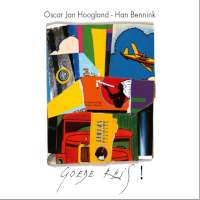 Since Misha Mengelberg (born 1935) helped found Dutch improvised music in the 1960s, at least one Hollander from each subsequent generation has carried on his legacy of smart, playful, subversive pianism, some kind of way. First came the more rigorously whimsical Guus Janssen, born 1951 (who took over Misha’s chair in the ICP Orchestra), then Cor Fuhler (1964, who’d subbed for Mengelberg in ICP after the master’s 1997 heart attack) – not forgetting Cor’s worthy contemporaries Michiel Braam and Michiel Scheen. The fourth generation’s loose cannon of the keys is Oscar Jan Hoogland, born 1983, in some ways the most anarchic of the bunch. He and Han Bennink have an occasional duo (in that long line of Han’s piano-drums duels, roping in all of the above), finally heard on record with Goede Reis! – Dutch for ‘have a nice trip.’ That, the duo do. It’s an excellent introduction to the junior partner.
Since Misha Mengelberg (born 1935) helped found Dutch improvised music in the 1960s, at least one Hollander from each subsequent generation has carried on his legacy of smart, playful, subversive pianism, some kind of way. First came the more rigorously whimsical Guus Janssen, born 1951 (who took over Misha’s chair in the ICP Orchestra), then Cor Fuhler (1964, who’d subbed for Mengelberg in ICP after the master’s 1997 heart attack) – not forgetting Cor’s worthy contemporaries Michiel Braam and Michiel Scheen. The fourth generation’s loose cannon of the keys is Oscar Jan Hoogland, born 1983, in some ways the most anarchic of the bunch. He and Han Bennink have an occasional duo (in that long line of Han’s piano-drums duels, roping in all of the above), finally heard on record with Goede Reis! – Dutch for ‘have a nice trip.’ That, the duo do. It’s an excellent introduction to the junior partner.
The album self-consciously places Hoogland in the lineage just laid out, including as it does tunes by Mengelberg and Fuhler. (The disc is dedicated to Cor, who died in Australia a month before Goede Reis! was recorded in an empty Bimhuis in August 2020.) The “De Bokkenrijder’s Race” kicks off with and makes pivotal use of Guus’s signature syncopated “hi-hat” lick, played on the piano’s fast-decaying almost pitchless top keys. The nattering sound overlaid on that piece – the Bimhuis-TV skim of the album-release concert reveals – comes from multiple portable record players spinning “Bokkenrijder” ( = goat rider) from the late altoist Paul Termos’s LP Solo 84–85 at right and wrong speeds. (Some enterprising label should get to work reissuing the Claxon catalog.) There’s also a tune or three by Mengelberg heroes Ellington and Monk. “Hornin’ In,” coupled with Misha’s oft-revived ‘60s ballad “Peer’s Counting Song” could almost be the Mengelberg-Bennink duo – quick piano scrambles and turnabouts, bonked-out clotted chords, fff to ppp dynamics in short order – save perhaps that Han never tries to drown the pianist out. A Blindfold Testee might only sense a trap when Oscar Jan voices the melody in the bass; he’s got a strong left hand.
Hoogland has more tells than that. Here as elsewhere, he deploys a bevy of noisemakers, including crackle box, electric clavichord, those portable record players (also spinning what sound like a few global-music records), cassette players loaded with who-knows-what, and battery-powered megaphones. Ellington’s “Fleurette Africaine,” with its own twinkling repetitions, is played straight and gently fragmented, and overlayed with (recorded, and ghostly sounding) shakuhachi or hotchiku. Bamboo flute makes no conceptual sense, save perhaps that the tune dates from the same era as Far East Suite, but it works somehow; Oscar Jan explicitly ties the layers together when piano and Japanese flute’s pitch-ranges converge halfway through. Bennink is mostly under wraps, although when piano misbehaves a little toward the end, drums back its play. At 79 when Goede Reis! was recorded, Han may give the impression he’s mellowing a bit, but his reaction time hasn’t slowed, and he minds those shifting dynamics. Better to say he’s intent on drawing his partner out – and hardly for the first time, when working with pianists he likes.
The drummer’s firm pulse enlivens the sound-collagey “Propeller,” boasting solo and call-and-response chants (West African?), crackle-box glissandi, looped (Afropop?) guitar and plenty of Hoogland’s electric clavichord, with its key-pressure–sensitive pitch bends (sometimes sounding oddly like bass guitar), and enough space to let Han poke through in the closing minutes. That clav sets Hoogland apart. There’s more collage-ing – and OJ furiously attacking the clavichord – on “Musique Automatique Typographique.”
Brevity works in the program’s favor; 39 minutes seems just right. (Misha played a few short sets himself – and thought high-energy free jazz would make good singles music, because a little goes a long way.) The longest all-over-the-place jam, at eight minutes, settles down before the back half into a long thin/thick drone, eventually giving way to Cor Fuhler’s lovely “Rhythm Three,” a ballad built around simple materials: falling minor-thirds and similar intervals, falling like snow. It serves as a fitting memorial to that much-beloved improviser, composer, bandleader, and inventor – of the keyboard-violin hybrid, the keyolin – whose chaotic last years in Australia threw his many friends back home for a loop. (Fuhler liked comic collagey stuff himself, in his guise as DJ Cor Blimey.)
Like his forebears Hoogland has studied the particulars of Monk’s piano sonority and clustery voicings, catching same on a romping “Epistrophy” (adding a few subterranean bass arpeggios – Han drawing an exact bead on the melody’s rhythms right with him) and a surprisingly tender slow-to-medium “Ugly Beauty,” played almost totally straight, save for a distended (and, second/last time through, unresolved) ending. Han’s engaged but keeps a low profile, selflessly giving OJ the spotlight. It’s his time now.
–Kevin Whitehead
Junk Magic
Compass Confusion
Pyroclastic Records PR 12
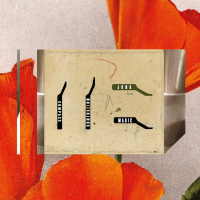 Compass Confusion, the second offering from Craig Taborn’s Junk Magic (Mat Maneri, Chris Speed, Erik Fratzke, Dave King), picks up where the band’s 2004 debut left off – right at the intersection of analog and digital, acoustic and electronic. Compared to the excellent first album, Compass Confusion is more fluid, dynamic, and, despite the heavy use of electronics, more organic. The interface between the compositions, improvisations, sound design, and production is seamless, and the electronic elements sound richer and more nuanced. As a whole, the new album is highly cohesive and plot-driven, suggesting that the band’s vision has become fully realized.
Compass Confusion, the second offering from Craig Taborn’s Junk Magic (Mat Maneri, Chris Speed, Erik Fratzke, Dave King), picks up where the band’s 2004 debut left off – right at the intersection of analog and digital, acoustic and electronic. Compared to the excellent first album, Compass Confusion is more fluid, dynamic, and, despite the heavy use of electronics, more organic. The interface between the compositions, improvisations, sound design, and production is seamless, and the electronic elements sound richer and more nuanced. As a whole, the new album is highly cohesive and plot-driven, suggesting that the band’s vision has become fully realized.
What makes this evocative, lush, and mercurial album so compelling is that the borderlines between the human and the machine as well as those that demarcate genre boundaries blur to the point of being irrelevant, which frees the band to do something wholly unique. This is most easily realized when attempting to parse out what each musician is doing, which on this album quickly turns out to be a fool’s errand. For example, on electronic drums, King can play conventional drum sounds in a conventional way, as he does on the quirky head-nod-inducing “Laser Beaming Hearts.” But he can also program them to produce any sound he can imagine. Is that really Speed’s glinty clarinet flashing up to the surface in real time? Or did King trigger a clarinet sample with a drum pad? Perhaps Taborn has decided to send drum patterns out through a sequencer, bypassing the drum chair altogether. In a sense, who does what no longer matters: take in the bells, gongs, scrapes, and metallic groans of “The Night Land” as a whole, all at once. Forget keeping score, accept the assemblage of sound as it presents itself.
Approaching the music in this fashion helps to make sense of it. The pieces fit together, if you let them. Although “Sargasso” begins where “The Night Land” left off, the pointillistic mallet percussion and the severe viola/tenor unison line slowly gets corrupted by a glitched-out cybernetic beat that noise rappers like JPEGMAFIA dream about. Think of the Borg assimilating the Federation. “The Science of Why Devils Smell Like Sulphur” (which bears a slight family resemblance to Dan Weiss’s Starebaby) is a manic mix of doom metal tonnage, oblique chamber improvisation, and short-circuiting electronica, all trying to decide who gets to speak for the group. Taborn’s forearms crashing down on the keyboard against deep-space white noise against Maneri’s best humpback whale call against something that won’t make its presence felt until the fifteenth listen. Compass Confusion closes with “Sunsets Forever,” with its warm washes of swelling sound enveloping the listener. If everything that preceded were scenes out of a dystopian nightmare, this is the feeling when you wake up and realize that the sulphur-smelling devils were just a dream. Breathe deep.
–Chris Robinson
Catherine Lamb
Muto Infinitas
Another Timbre at173
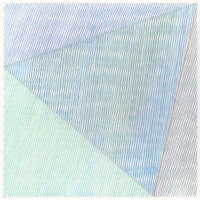 Composer Catherine Lamb’s Muto Infinitas has been a work-in-progress over the last five years. Lamb began writing the piece specifically for flautist Rebecca Lane upon her purchase of an Eva Kingma quartertone bass flute. The instrument is designed to allow the playing of complete chromatic quartertone scales through all the registers as well as enabling an extended set of chromatic multiphonics and pitch control. Starting with the microtonal and timbral possibilities of the instrument, Lamb developed the just intonation piece with an ear toward how it expands harmonically over time, with threads of melody emerging in barely perceptible ways. Lane describes it in her interview on the Another Timbre site as follows. “The piece is unmetered – the double bass, as a sustaining instrument, follows the voicings of the flute, whose gradually diminishing breath lengths generate the movement from harmony to melody over around 60 minutes. However, it’s an ambiguous zone between harmony and melody, consonance and dissonance, the individual timbre of our instruments and their timbral fusion.”
Composer Catherine Lamb’s Muto Infinitas has been a work-in-progress over the last five years. Lamb began writing the piece specifically for flautist Rebecca Lane upon her purchase of an Eva Kingma quartertone bass flute. The instrument is designed to allow the playing of complete chromatic quartertone scales through all the registers as well as enabling an extended set of chromatic multiphonics and pitch control. Starting with the microtonal and timbral possibilities of the instrument, Lamb developed the just intonation piece with an ear toward how it expands harmonically over time, with threads of melody emerging in barely perceptible ways. Lane describes it in her interview on the Another Timbre site as follows. “The piece is unmetered – the double bass, as a sustaining instrument, follows the voicings of the flute, whose gradually diminishing breath lengths generate the movement from harmony to melody over around 60 minutes. However, it’s an ambiguous zone between harmony and melody, consonance and dissonance, the individual timbre of our instruments and their timbral fusion.”
This version, recorded over two days, pairs Lane with bassist Jon Heilbron, whose own work with microtonality makes him an ideal partner. The score is constructed from underlying ratios, frequencies or partial numbers defining the notation, starting with long held notes that vibrate against each other, providing a framework for the two musicians to delve in to the ensuing microtonal relationships. Lane resonant, rounded delivery downplays the breathiness so often inherent to the instrument, with a soft attack and clean release that lays the tones out with resolute clarity. She observes that “I like to think of myself as a frequency producer rather than a flute player, finding freedom through numbers ... Re-approaching melodic material from this angle helps me to put aside the historical baggage of my instrument and find pleasure in melody again.” One is struck with sonic colors of the piece; how the arco harmonics and overtones of the bass merge with the deep frequencies of the flute. Heilbron favors the upper registers of his bass, astutely melding the harmonics of the bass and pacing of his bowing with his partner’s playing.
The piece builds slowly, with long intertwined tones that open up into short silent pauses. The phrasing and pacing are not readily discernable and one is quickly engulfed in the measured progression. Shifts in densities and layers occur gradually blurring any notion of transition. Instead, it unfolds with a muted reserve, continuing to reveal subtle nuances through repeated listens. Listening is akin to wandering through an expansive architectural space at dusk, coming across vestibules and corridors that are illuminated by the changeable light. By midway through, as threads of melodic kernels begin to appear, the layers of microtones sound almost like the quavering chords of a harmonium. In the final third, Heilbron begins to introduce some lower register playing, sometimes mirroring and other times playing off of Lane, adding new harmonic layers to the mix adding additional gradations to the mix. As the piece draws to a close, shifting striations of melody and harmony come to the fore, bringing things to a transcendent conclusion.
–Michael Rosenstein
Paul Lovens + Florian Stoffner
Tetratne
ezz-thetics 1026
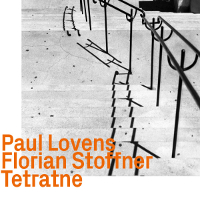 It’s got to be awfully intimidating to play in a duo with the amazing percussionist Paul Lovens. When some of your previous duo partners include Paul Lytton, Alex von Schlippenbach, Mats Gustafsson, and Cecil Taylor, you know you’re in some heavy company. But the resourceful Swiss guitarist Florian Stoffner, whom some might know for his work with Manuel Mengis, has not only chops, but a range of sound devices and techniques that fit marvelously with Lovens’ voice.
It’s got to be awfully intimidating to play in a duo with the amazing percussionist Paul Lovens. When some of your previous duo partners include Paul Lytton, Alex von Schlippenbach, Mats Gustafsson, and Cecil Taylor, you know you’re in some heavy company. But the resourceful Swiss guitarist Florian Stoffner, whom some might know for his work with Manuel Mengis, has not only chops, but a range of sound devices and techniques that fit marvelously with Lovens’ voice.
The four pieces on this brief record constituted the duo’s set at 2019’s Sound Disobedience Festival in Ljubljana. Lovens is in customarily fine form, and within just a few minutes it’s clear that Stoffner is at least partly indebted to plectrists like Joe Sachse and Stefan Wittwer. They’re hardly household names, but Stoffner’s got a similarly percussive style, filled with choked notes, rough slashes behind the bridge, judicious taps, and volume swells. It works terrifically with Lovens’ gift for timbre and contrast, from small clacks to ferocious low-tom thud.
The music is often quite understated, with Stoffner preferring resounding, chiming noises to runs of pyrotechnics. In his playing, there’s a savvy use of harmonics, but it’s not Bailey-like to my ears. Perhaps better to compare his flashes and prickly phrasing to Fred Frith. The moments of heat that do occur come across more as energies welling up than expressionist sprints. Slurred and scraped strings wend their way between rolling patterns or silvery clouds of metal. Mid-set, things get especially spring-loaded and clattery, like the machines from Chaplin’s Modern Times falling apart. And the closing section opens with a hilarious, detuned mutation of “Blackbird” for a few seconds before drifting off into the ether. Fabulous stuff.
–Jason Bivins
Sergio Merce
en lugar de pensar
Edition Wandelweiser Records EWR 2011
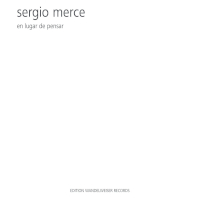 When Buenos Aires-based Sergio Merce’s release Microtonal Saxophone came out in 2014, it marked the debut of a singular approach toward not just saxophone playing, but to the instrument itself. Merce essentially re-designed the instrument, replacing the keys of his horn with various water, gas, and compressed air valves which could be tweaked and adjusted to tune the harmonics and overtones of the instrument. Gone was the ability to shift between notes with the depression of key pads, replaced instead by the ability to fine-tune microtones and multiphonics. This could have become a quirky mechanical experiment. But Merce looks at it as far more, stating “It's important to note that I constructed the instrument not as a luthier, but as a composer.” Since then, Merce has found a receptive home for his work on Edition Wandelweiser, releasing semi-regular explorations into the instrument. On 2016’s be nothing, he combined microtonal saxophone with analog synthesizer and electronics for a piece of extended multi-hued, reverberant micro-harmonics that slowly pulse and evolve over an hour. 2018’s three dimensions of the spirit is more elemental, with an opening piece for prepared tenor saxophone and two pieces for microtonal saxophone.
When Buenos Aires-based Sergio Merce’s release Microtonal Saxophone came out in 2014, it marked the debut of a singular approach toward not just saxophone playing, but to the instrument itself. Merce essentially re-designed the instrument, replacing the keys of his horn with various water, gas, and compressed air valves which could be tweaked and adjusted to tune the harmonics and overtones of the instrument. Gone was the ability to shift between notes with the depression of key pads, replaced instead by the ability to fine-tune microtones and multiphonics. This could have become a quirky mechanical experiment. But Merce looks at it as far more, stating “It's important to note that I constructed the instrument not as a luthier, but as a composer.” Since then, Merce has found a receptive home for his work on Edition Wandelweiser, releasing semi-regular explorations into the instrument. On 2016’s be nothing, he combined microtonal saxophone with analog synthesizer and electronics for a piece of extended multi-hued, reverberant micro-harmonics that slowly pulse and evolve over an hour. 2018’s three dimensions of the spirit is more elemental, with an opening piece for prepared tenor saxophone and two pieces for microtonal saxophone.
en lugar de pensar (instead of thinking) continues these investigations with two pieces for microtonal saxophone, analog synthesizer and EWI4000s, an electronic wind instrument with a built-in analog sound module. The first track, “forma circular,” is a 31-minute probe into slowly undulating overtones, from upper register partials to groaning, low-end rumble bringing to mind a microtonal pipe organ. But it is how Merce orchestrates these oscillating acoustic and electronic coursing waves that makes this such a mesmerizing listen. Starting out with shimmering tones that build upon each other, he introduces electronic timbres, first resonant bass that engulfs the sound plane with palpable tremors and then, gradually introducing glitched timbres. The “circular form” judiciously lets fundamental sections accrue, building cavernous presence, and then breaks them with pools of silence, pausing and then surging along again. When the opening tones are reintroduced, midway through, one is brought back around again, calling on memory of the components that preceded.
The second piece, “forma continua,” at just over 14 minutes long, utilizes a more active processing of sound. Starting with a slow-pan rumble, pure tones quaver against the electronic washes. While disconcerting on headphones, letting the sound reflect in a room provides an immersive sense of the dynamic and microtonal spectrum at play. Merce plots the trajectory of the piece from tremblors of converging frequencies and pulses, letting them build, shudder against each other, and dissipate over the course of the piece. With en lugar de pensar, Merce confirms that he continues to find new areas to contemplate in these self-produced sonic studies.
–Michael Rosenstein
